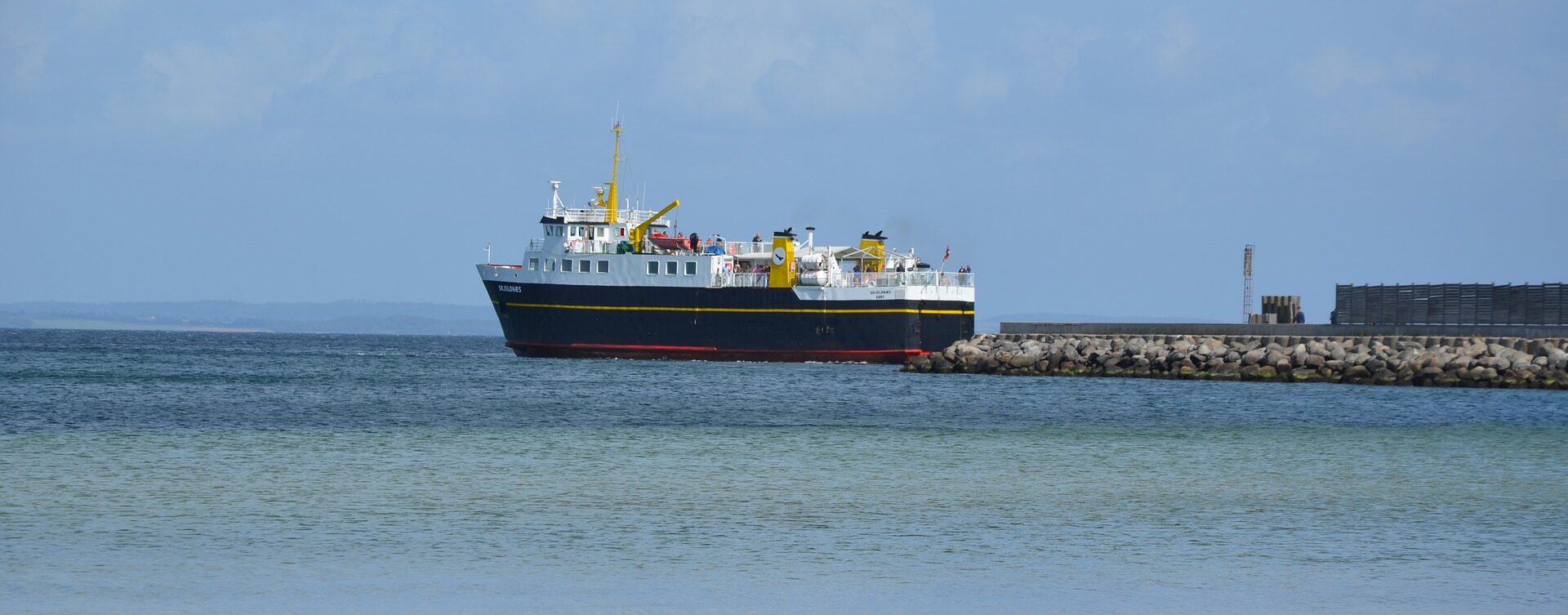Maritime industry in the Baltic Sea region and around the world is facing increasing pressure to meet strict environmental standards while also maintaining competitiveness in a dynamic market environment. In other words, there is a need to produce more value with less waste, pollution and resources. This idea is referred to as eco-efficiency and it is one of the key themes in ECOPRODIGI. The project partners are committed to discovering the key eco-inefficiencies of maritime industry as well as to develop and pilot digital solutions to better measure, visualise and optimise industry processes.
In line with this, ECOPRODIGI partners Mr. Niels Gorm Malý Rytter (Head of Section, University of Southern Denmark) and Mr. Mads Billesø (Senior Project Manager, Innovation and Partnerships, DFDS) took the virtual stage in “The Business of Clean Shipping” webinar which was organised by Clean Shipping Project Platform (CSHIPP) on the 14th of May. The purpose of the seminar was to provide insight into the environmental impacts of shipping, the business opportunities provided by clean shipping solutions as well as the ways in which the transition towards environmentally and economically sustainable shipping can be supported. In their presentation, Mr. Rytter and Mr. Billesø discussed how the digitalisation of industry processes can be beneficial not only for climate and the environment, but also for shipping companies themselves as eco-efficiency gains will mean savings in costs and resources. The discussion was based on the work done in ECOPRODIGI’s industry cases on digital performance monitoring, integrated logistics and cargo stowage optimisation.
The journey
So what does the journey towards digitalisation of maritime industry processes actually involve? In most cases, there are various steps that need to be taken in order to digitalise operations in a comprehensive and beneficial way. From data capture devices to connectivity, data storage, data cleansing and analysis through data and model visualization, decision support tool development, system integration to the use of solutions in daily operations, the journey is by no means short. Necessary investments often include both hardware and software, as well as training and development costs, investments in process mapping, (re)design, and the development of KPIs and metrics.
The size of investment depends on factors such as ambition and time horizon, available resources and the overall scope of operations. When thinking about the bigger picture, investment decisions are usually also influenced by issues such as regulatory frameworks, strategic mission and priorities, competition and profitability as well as customer impact.
The challenges
What, then, are the main challenges for successful digitalisation of maritime processes? As mentioned earlier, the digitalisation journey is often a long one with various different steps encompassing technology, people and processes. This means that resources is the form of time, money and patience are needed. In addition, depending on situation external issues, such as regulatory frameworks, level of standardisation and competitive environment, can act as obstacles or enablers of digital development. The payback time for investments can vary greatly based on the decisions made in the beginning of and during the digitalisation journey. Therefore, the question of when and how to invest in digitalisation has to be considered carefully. Based on the findings from ECOPRODIGI’s industry cases so far, a well-developed long-term strategy combined with a step-by-step implementation approach, commitment from key stakeholders as well as strong partnerships with skilled researchers and technology vendors is critical for obtaining desired results.
The benefits
And does it make business sense to go digital? Well, based on the sea trials and simulation findings from ECOPRODIGI’s industry cases so far, the eco-efficiency benefits from the utilisation of digital tools and solutions can include savings in fuel consumption, better asset utilisation, reductions in harmful emissions, savings in time and other resources, and improvements in safety on board and ashore. Digitalisation also enables the industry to benefit from new, practice-oriented, low-cost training methods. Although digitalisation requires significant investments, the calculations and estimates made in ECOPRODIGI suggest that the payback time is relatively short (1-5 years), depending on the scale, complexity and interdependence of industry case deliverables. It is also worth noting that global digital standards for ship operations and maritime logistics are likely to improve return on investment significantly in the future.
From the environmental point of view, it is clear that the environmental impact of shipping is significant all the way from the ship construction through operation, decommission and recycling processes. The global fleet size of ships is increasing which makes it even more important to develop shipping into cleaner and more sustainable direction. As summarised by Mr. Rytter, digitalisation complements other necessary innovations in ship design, technologies and new fuels to meet emission reduction targets set for 2030 and 2050. In many cases, digital tools and solutions enable maritime industry to produce concrete and beneficial results already in the short-term while other cost-efficient solutions for vessel design and fuels are being developed.
A recording of “The Business of Clean Shipping” webinar can be viewed here (log in with name and email).




